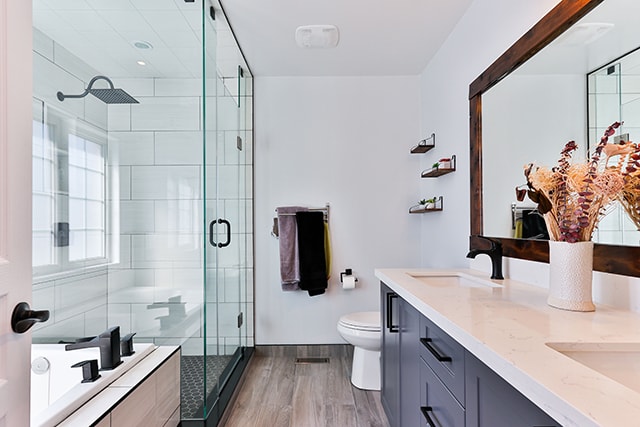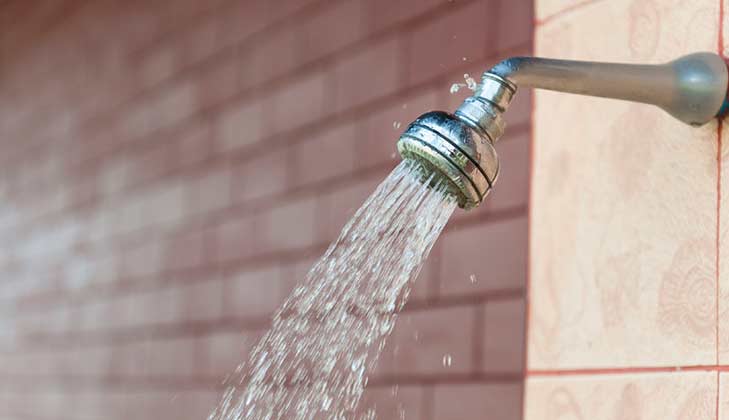{Source This Article What are your concepts on Hiring a Plumbing Company? We recommend that you clean your acrylic bathing product made of Delta ProCrylic or Acrylic with Innovex Technology with non-abrasive soaps and cleaners, such as: When it’s time to clean, always use a terry cloth towel, soft cloth or sponge to avoid scratching the acrylic surface. Don’t use abrasive scrubbing pads, steel wool or sponges, cause permanent damage to the acrylic material. If you use a drain cleaner or clog remover, be sure to rinse thoroughly with water so no product is left standing near the drain. Some chemicals and cleaners may deteriorate acrylic surfaces, causing cracks and, potentially, property damage. To avoid this, don’t use cleaning products that state on their label that they are not suitable for use on Acrylic, ABS, Polystyrene or Plastic. Be sure to check the label of any product before you apply it to the surface; it’s easier to avoid damage than to try to remedy it. Chemicals we do not recommend using to clean acrylic showers/tubs: When you’re ready to apply sealant, a little planning goes a long way. Pick up some painter’s tape and use it to mask off the seam to help make cleaning up easier. When you’re applying the bead, use a constant, steady speed to avoid an uneven finish. Use a caulk tool or a plastic spoon to work the sealant into the joint. Wetting the tool with denatured alcohol will help create a smooth finish. Follow the directions on the back of the tube for cure time. Certain chemicals and cleaners may deteriorate acrylic surfaces, causing cracks and, potentially, property damage. After you’re finished applying it, clean up the product surface and remove any excess sealant with denatured alcohol. Don’t use solvents (turpentine, lacquer thinner, mineral spirits, paint thinner, MEK, xylene, acetone, naphtha, etc.) that can wreak havoc on an acrylic surface. With a little care and consideration, you can prevent damage to your acrylic shower or tub. Keep a supply of soft cloths handy and remove any damaging products or abrasive scrubbing items from the bathroom to ensure they aren’t around when it’s time to clean. https://www.deltafaucet.com/design-innovation/inspiredliving/how-to-clean-acrylic-shower As an avid reader about Hiring a Plumbing Expert, I was thinking sharing that topic was appropriate. Liked our blog? Please share it. Let someone else locate it. Thank you for your time spent reading it.
Polymer bathrooms, shower trays, and various other acrylic bathroom ware have become more typical in washrooms in current times. Thanks to contemporary chemistry we currently have alternatives to enamel as well as ceramic products for bathroom components. These include various polers as well as plastic products. Not as sturdy as well as elegant as enamel as well as porcelain baths and fixtures, they are extra affordable as well as serve pretty a lot the very same fundamental function. These products are easy to make, store, and transport and also in the incidence of damages, they are conveniently fixed. Some common instances of damages to acrylic bathroom components consist of discoloration, fractures, openings, etc. Let's take a look at several of these problems and quick ways of fixing them.Bath Staining
With extended use of acrylic bathrooms comes staining or discoloration. While some discolorations can be gotten rid of quickly, utilizing special chemicals, others need that the bathroom be resprayed. Aromatherapy oils loosen up the dust in some situations consequently bring back the bath to its former splendor.Chain reaction
Occasionally, people try to paint the entire surface of their acrylic bathroom by themselves either because they do not like the shade to conceal imperfections. When they do not like the outcome, they apply paint cleaners. You should never ever make use of paint cleaner on acrylic bathrooms. Although paint eliminators do not react with the surface area of steel baths, they ruin acrylic bathrooms irreversibly. This creates even more benefit the expert. The most effective strategy below is to call a professional for aid with changing the bath.Scraped shower or bath surface area
Acrylic bathroom components are not abrasion-resistant like enamel selections. They are much more susceptible to scratches and much less durable. Being an extremely soft material, acrylic scratches can also be hidden without finish or dental filling. For these, you should seek professional aid for your bathroom repairs. As a prevention idea, avoid using abrasive sponges when cleaning. Rather, you must utilize an easy fluid cleanser with a soft pad.Cracked Acrylic Baths
The life-span of acrylic as well as fiberglass baths is up to 15-20 years for shower frying pans as well as bathrooms, generally. Fractures in an acrylic shower tray are possibly amongst the simplest issues to fix for a repair work professional. The very best component is you get to see the results almost right away. This is the same for PVC, resin, and various other such products. A min split need to be attended to in a timely manner before it spreads more resulting in a lot more extreme damage. While these can be chosen a spending plan tackily, a specialist can assist you get it performed with even more skill for a cost. Quick home fixes can be finished with epoxy materials however if the outcome ends up poorly, this would make the repair work a lot more difficult for an expert.
Polymer baths, shower trays, and other acrylic washroom ware have actually come to be much more usual in restrooms in recent times. With prolonged usage of acrylic bathrooms comes discoloration or staining. You should never ever use paint eliminator on acrylic baths. Paint eliminators do not react with the surface area of steel baths, they ruin acrylic bathrooms irreversibly. The life-span of acrylic and fiberglass bathrooms is up to 15-20 years for shower pans and bathrooms, normally.How to clean Acrylic shower
USE THESE NON-ABRASIVE CLEANERS
DO NOT USE THESE CLEANERS
Sealant Application Tips

Request A Quote
5 Things Nobody Informs You around Shower & Tub Wall Panels
Call